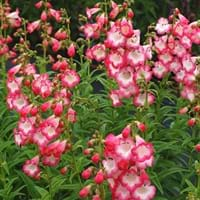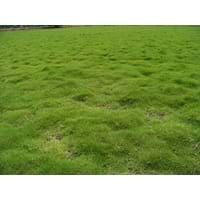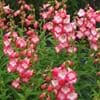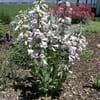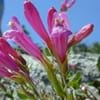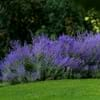Life Span
Perennial
Perennial
Type
Flowering Plants
Grass
Origin
South-Central United States
South-Eastern Asia, Asia
Types
Penstemon digitalis, Penstemon barbatus, Penstemon heterophyllus
Korean Lawngrass , Meyer Zoysiagrass , Manilagrass
Habitat
Rocky areas
Lower slopes, Sandy stream banks
USDA Hardiness Zone
5-8
8-11
AHS Heat Zone
12-1
12 - 9
Sunset Zone
No Available
H1, H2, 8, 9, 12, 13, 14, 15, 16, 17, 18, 19, 20, 21, 22, 23, 24
Habit
Clump-Forming
Clump-Forming
Minimum Width
Not Available
Flower Color
White, Purple
Green, Light Green
Flower Color Modifier
Bicolor
Bicolor
Fruit Color
Not Available
Non Fruiting Plant
Leaf Color in Spring
Green
Light Green, Dark Green
Leaf Color in Summer
Green
Light Green
Leaf Color in Fall
Green
Green, Yellow green, Gold
Leaf Color in Winter
Not Available
Gold, Tan
Leaf Shape
Long linear and narrow
Grass like
Plant Season
Not Available
Spring, Summer, Fall, Winter
Sunlight
Full Sun, Partial Sun
Full Sun, Partial Sun
Growth Rate
Medium
Very Slow
Type of Soil
Loam
Loam, Sand
The pH of Soil
Neutral, Alkaline
Acidic, Neutral, Alkaline
Soil Drainage
Well drained
Average
Bloom Time
Late Spring
Not Available
Tolerances
Not Available
Drought, Salt, Soil Compaction
Where to Plant?
Ground
Ground
How to Plant?
From bulbs
Sod, Sprigging or Stolonizing
Plant Maintenance
Medium
Medium
Watering Requirements
Requires watering in the growing season
weekly regular
In Summer
Lots of watering
Lots of watering
In Spring
Moderate
Moderate
In Winter
Average Water
Average Water
Soil pH
Neutral, Alkaline
Acidic, Neutral, Alkaline
Soil Type
Loam
Loam, Sand
Soil Drainage Capacity
Well drained
Average
Sun Exposure
Full Sun, Partial Sun
Full Sun, Partial Sun
Pruning
Remove damaged leaves
Remove damaged leaves, Remove dead branches, Remove dead leaves
Fertilizers
All-Purpose Liquid Fertilizer
All-Purpose Liquid Fertilizer
Pests and Diseases
Red blotch
Army-worms, sod webworms
Plant Tolerance
Drought
Drought
Flowers
Showy
Insignificant
Flower Petal Number
Single
Single
Foliage Texture
Medium
Fine
Foliage Sheen
Matte
Matte
Invasive
Not Available
No
Attracts
Hummingbirds, Butterflies
Crickets
Allergy
Not Available
Not Defined
Aesthetic Uses
Showy Purposes
Beautification, Cottage Garden, Farmland, Ground Cover, Landscape Designing
Beauty Benefits
Not Available
Not Available
Environmental Uses
Air purification
Provides ground cover, soil erosion prevension on hill slopes
Medicinal Uses
Not Available
Unknown
Part of Plant Used
Flowers, Leaves
Whole plant
Other Uses
Showy Purposes, Used as Ornamental plant
Used as a golf course turf
Used As Indoor Plant
No
Insignificant
Used As Outdoor Plant
Yes
Yes
Garden Design
Bedding Plant, Rock Garden / Wall, Wildflower
Container, Edging, Groundcover, Lawns and Turf, Mixed Border, Rock Garden / Wall, Tropical
Botanical Name
PENSTEMON cobaea
ZOYSIA tenuifolia
Common Name
Beardtongue
Korean Velvet Grass
In Hindi
Beardtongue
कोरियाई मखमल घास
In German
Bartfaden
Korean Samt Gras
In French
beardtongue
herbe de velours coréenne
In Spanish
beardtongue
hierba de terciopelo de Corea
In Greek
Beardtongue
hierba de terciopelo de Corea
In Portuguese
Beardtongue
grama de veludo coreano
In Polish
Beardtongue
Not Available
In Latin
ursus lingua
Carl herba
Phylum
Tracheophyta
Angiosperms
Class
Equisetopsida
Monocotyledonae
Family
Scrophulariaceae
Poaceae
Genus
Penstemon
Zoysia Willd
Clade
Angiosperms, Asterids, Eudicots
Commelinids
Tribe
Not Available
Cynodonteae
Subfamily
Not Available
Chloridoideae
Properties of Beardtongue and Korean Velvet Grass
Wondering what are the properties of Beardtongue and Korean Velvet Grass? We provide you with everything About Beardtongue and Korean Velvet Grass. Beardtongue doesn't have thorns and Korean Velvet Grass doesn't have thorns. Also Beardtongue does not have fragrant flowers. Beardtongue has allergic reactions like Not Available and Korean Velvet Grass has allergic reactions like Not Available. Compare all the properties and characteristics of these two plants. Find out which of these plant can be used as indoor plant. If you are interested to decorate your house and garden, find out aesthetic uses, compare them and select the plant which will beautify your surrounding. Along with beautification, try comparing medicinal and edible uses of Beardtongue and Korean Velvet Grass and you can choose the plant having best and most benefits.
Season and Care of Beardtongue and Korean Velvet Grass
Season and care of Beardtongue and Korean Velvet Grass is important to know. While considering everything about Beardtongue and Korean Velvet Grass Care, growing season is an essential factor. Beardtongue season is Not Available and Korean Velvet Grass season is Not Available. The type of soil for Beardtongue is Loam and for Korean Velvet Grass is Loam, Sand while the PH of soil for Beardtongue is Neutral, Alkaline and for Korean Velvet Grass is Acidic, Neutral, Alkaline.
Beardtongue and Korean Velvet Grass Physical Information
Beardtongue and Korean Velvet Grass physical information is very important for comparison. Beardtongue height is 30.00 cm and width 30.50 cm whereas Korean Velvet Grass height is 2.50 cm and width Not Available. The color specification of Beardtongue and Korean Velvet Grass are as follows:
Beardtongue flower color: White and Purple
Beardtongue leaf color: Green
Korean Velvet Grass flower color: Green, Light Green
- Korean Velvet Grass leaf color: Light Green and Dark Green
Care of Beardtongue and Korean Velvet Grass
Care of Beardtongue and Korean Velvet Grass include pruning, fertilizers, watering etc. Beardtongue pruning is done Remove damaged leaves and Korean Velvet Grass pruning is done Remove damaged leaves, Remove dead branches and Remove dead leaves. In summer Beardtongue needs Lots of watering and in winter, it needs Average Water. Whereas, in summer Korean Velvet Grass needs Lots of watering and in winter, it needs Average Water.
